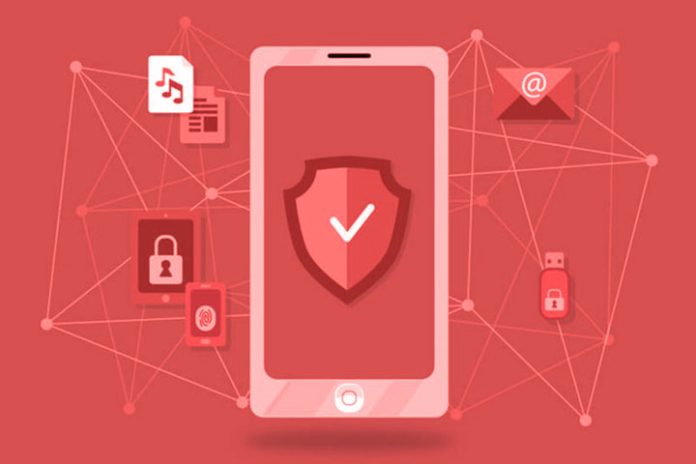Having become more numerous than each other, mobile applications are the target of various data hacks. Application protection is a major issue for companies with mobile application projects. Indeed, security breaches are more and more numerous despite technological advances in digital security.
The Mobile Application: Overview of its Security
The development code of a mobile application is complex, whether on Android or iOS. Thus, its security is a major issue for both the company and the users.
What is Application Security?
The issue of mobile application security is based on the theft or misappropriation of data or code contained in the applications. Securing an application begins during its design , continues during development and intensifies after it is made available on the stores . More concretely, application security can include the hardware, software and procedures used to prevent and mitigate security vulnerabilities. For example, a hardware-based application security solution might be a router that prevents a computer’s IP address from being displayed to users of other computers. In general, mobile application security measures are integrated directly, such as the application firewall.
The Mobile: A device to be Secured
The stores on which mobile applications are available, iOS (App Store) and Android (Google play store) differ according to the level of security they offer app users. Android customers, for example, see their applications access many services such as: camera/microphone, Wi-Fi connection information, location, contacts, calendar, photos and media… Behind these groups of Permissions hides a variety of individual permissions that can interfere deeply with privacy . These services offered by the phone are actually widely used by applications and can be the subject of an attack. The security mentioned is in fact global on all devices working with the Internet. We will focus here on applications.
There are many vulnerabilities in apps , whether it is a native Android or iOS application. An app-creating company should be aware of the risks and ideally be trained in the vulnerabilities.
Also Read: Apps And Data Protection – How To Secure Your Data
Application Data Risks
There are different risks related to the data stored in the applications: those concerning personal information or malware infections.
Malware infection
In fact, malware is malicious software, a virus , which integrates into the application solution through fake applications. This danger is widespread. For example, some malicious apps send expensive and unsolicited premium SMS. The risk of infection can, again for Data, be data-related. There is also malware that allows the application provider to track a number of user actions on their smartphone . It intercepts conversations, images, data, passwords… Thus, a bad security configuration can jeopardize the good functionality of the application and its viability.
These two risks are correlated with regard to user data but with two different systems: one is linked to poor protection and the other is linked to an attack . In a company carrying out an application project, it is recommended to benefit from training to prevent the many risks linked to possible flaws in the development code.
Solutions for better Mobile App Security
There are many solutions to mitigate these different risks and threats and thus avoid application security vulnerabilities . Some are more complex to set up than others. Every day there are many threats and solutions emerging, which is why the level of training is important.
Highly Secure Authentication
It is very common for security breaches to be caused by weak authentication . The latter concerns passwords in particular. Application creators have a duty to encourage their users to create complicated passwords. This may involve rules to be applied such as the use of uppercase, lowercase, numbers and special characters, with a minimum total number of characters required. The best is also to invite to create a new password every three months. In addition, and especially for particularly sensitive applications, two-factor authenticationis a very good solution. For example, for a banking application, going through an authentication that requires a password and a biometric identification (fingerprint) is essential to have a satisfactory level of security.
Application API Security
An API is a particularly popular entry point for hackers to steal data . Indeed, APIs allow mass data transfer, which is why it is essential to take into account the security of web applications to prevent hackers from having access to many applications, compromised by the insecure interface. . APIs must be very secure , this requires life cycle management methods. In fact, the work of programming an API by developers must make it difficult to access data resources : the back-end must be difficult to access. There are increasingly complex lifecycle management methods for APIs, but they are not applied well enough by developers or are simply not adopted by new APIs. Also, ensuring comprehensive API security takes time.
Other Solutions
SSL certificates can be a solution for securing data exchanges, in fact they allow them to be encrypted. Data exchanges concern in particular forms, bank transactions, etc., between the web server and the Internet user’s browser. Finally, there are VMware solutions and resources for application security. VMware is a multi-cloud services company, making it possible to manage networked environments remotely in particular and to avoid service interruptions before they occur. Furthermore, it is important to ensure that the level of training in terms of safety is sufficient with your developers. The good health of the mobile app code and final customer satisfaction depends on it.
Also Read: Mobile Security: How To Equip Your Phone With Proper Protection


